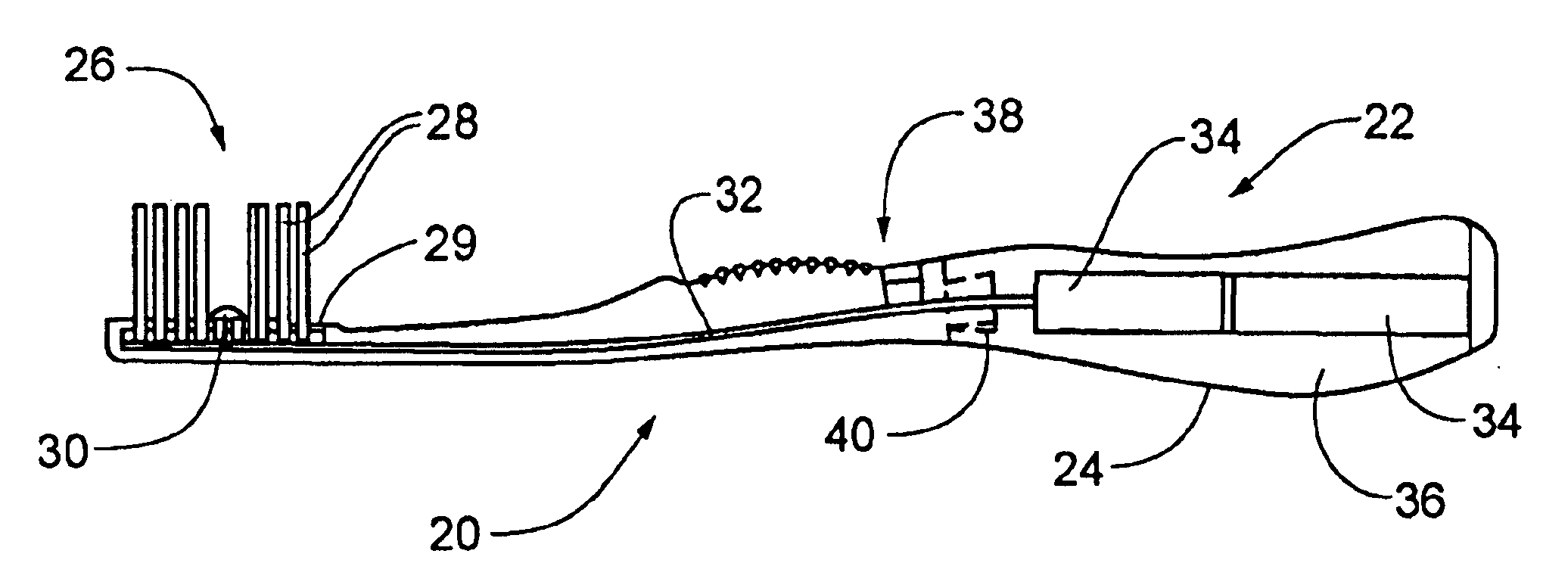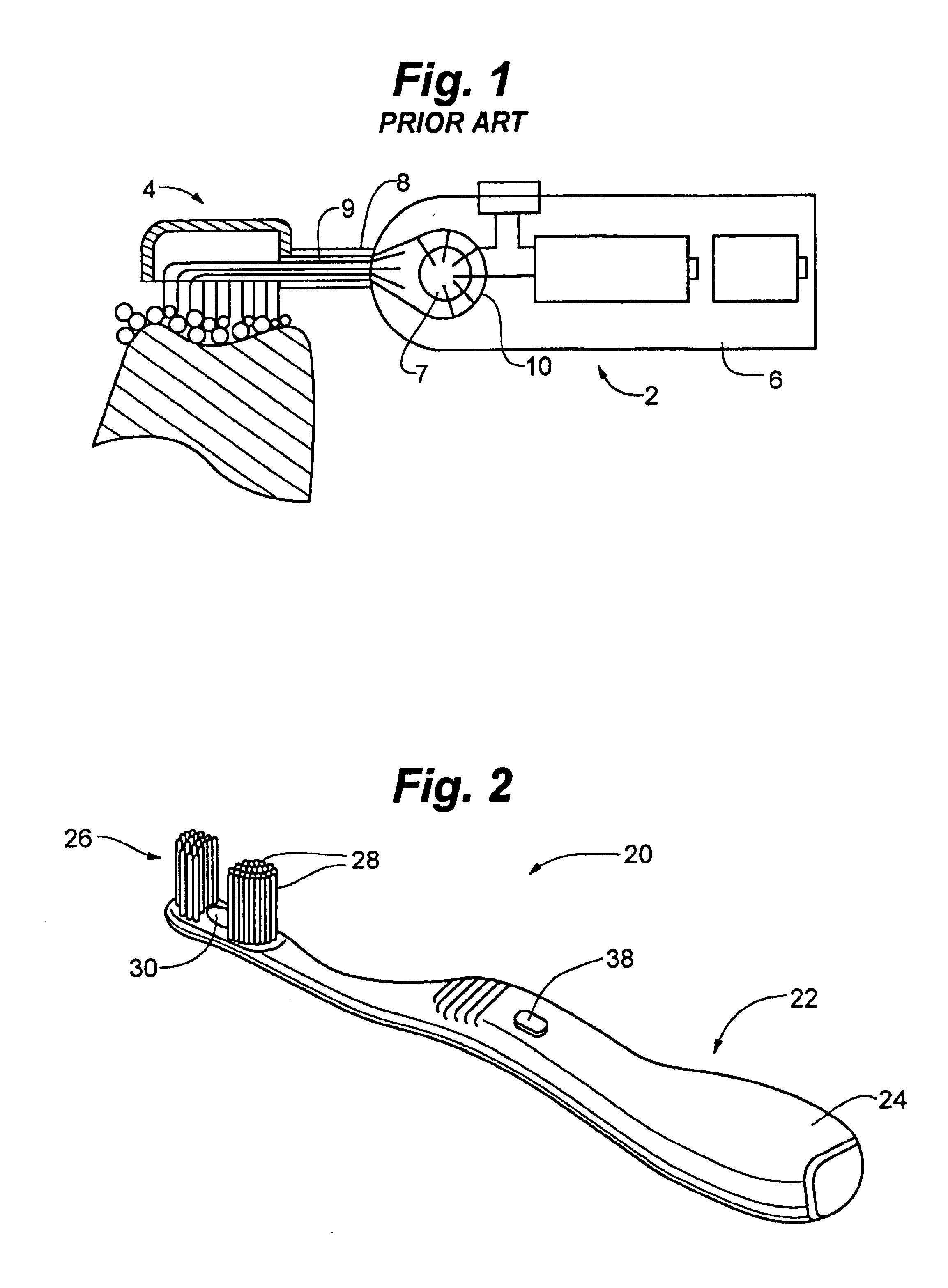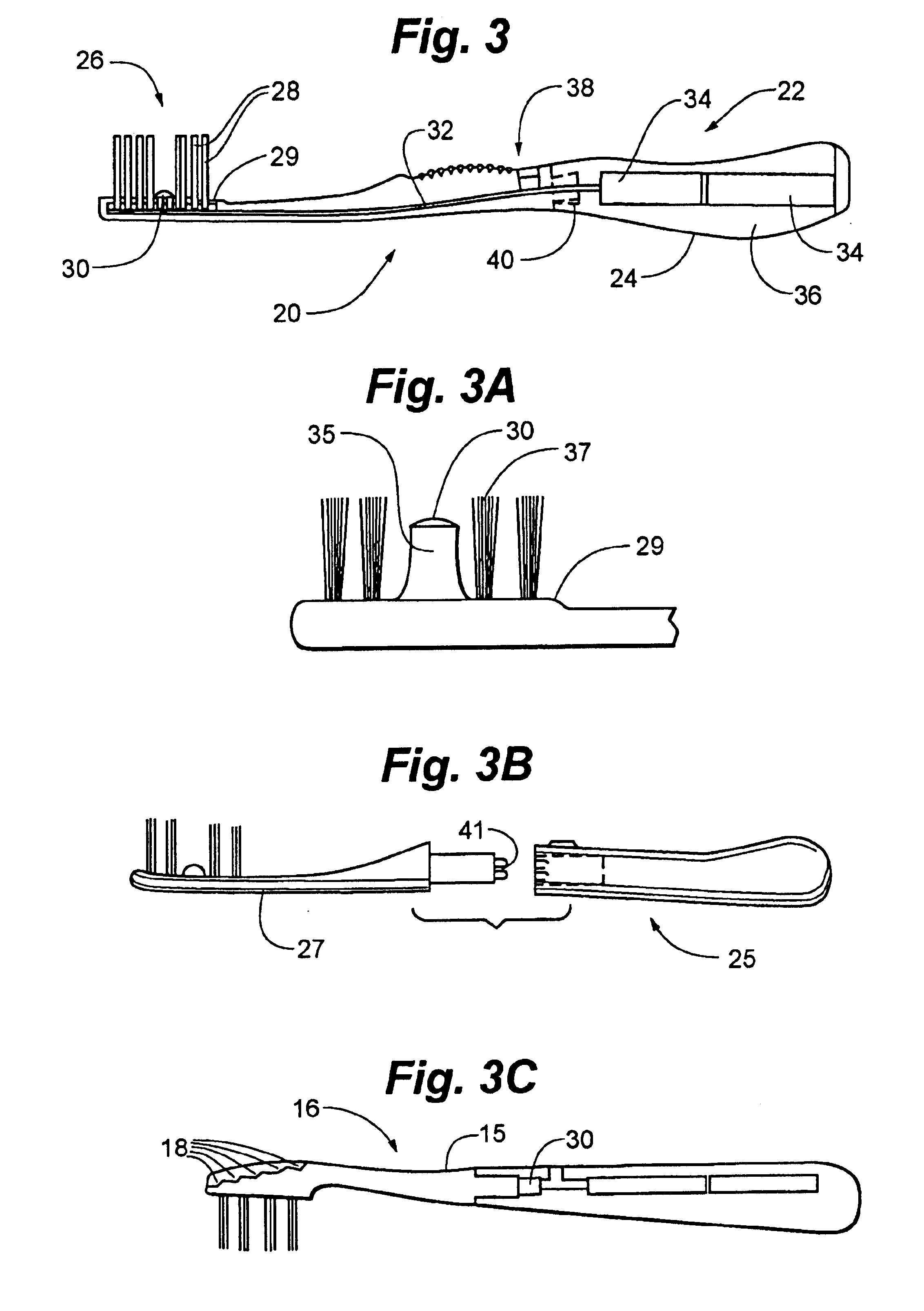Enhanced dental hygiene system with direct UVA photoexcitation
a dental hygiene and photoexcitation technology, applied in the field of dental hygiene systems and methods, can solve the problems of catalytic n-type semiconductor particles in promoting dental hygiene, the use of certain organic compounds and dyes, and the loss of certain organic species in gas or liquid media, so as to avoid the effect of attenuation
- Summary
- Abstract
- Description
- Claims
- Application Information
AI Technical Summary
Benefits of technology
Problems solved by technology
Method used
Image
Examples
example 1
[0070]A patient is provided with a toothbrush as illustrated in FIGS. 2-4, and a dentifrice containing about 0.5% by weight TiO2. The level of viable select deleterious bacteria present in the mouth of the patient is determined. Then, the patient applies the dentifrice to the bristles in the brush head, turns on the UVA light, and begins brushing the teeth, gums, and tongue, after which he rinses with water. After the patient has completed brushing, the brush is turned off and put away, and the level of the same deleterious bacteria in the mouth is measured. The level of viable bacteria in the mouth would be expected to be substantially reduced from that present before the brushing. The level of viable deleterious bacteria on the brush bristles is also measured for comparison purposes later in the example.
[0071]On another day, the same patient performs the same procedure using the same dentifrice, brushing for the same length of time, etc.; again the bacterial levels in the mouth ar...
example 2
[0074]A patient is provided with a flossing device as illustrated in FIGS. 14 and 15, as well as a mouthwash containing TiO2 particles. The patient rinses their mouth with the mouthwash, and then picks up and turns on the flossing device, proceeds to run the length of floss affixed in the head of the device between their teeth. The UVA light provided contiguously to the head of the device in which the floss is mounted irradiates the areas of the mouth past which the flossing device is passed. If the deleterious bacteria in those areas were measured before and after flossing, the level of viable deleterious bacteria would be found to be substantially reduced after flossing with the device.
example 3
[0075]In this example, a dental handpiece as shown in FIG. 17 is used by a dentist. The dental handpiece has a cutting bur and a water source which cools the bur as it is operated by the dentist in removing decayed tooth areas before applying a filling. TiO2 particles are suspended in the water provided by the handpiece, as it is operated. The UVA light source is also turned on while the device is operated. If the level of deleterious bacteria in the mouth and in the portions of the tooth remaining after removal of the decayed matter were measured, it would be found that the level of viable bacteria would be substantially reduced by the application of the TiO2-containing water in conjunction with the direct UVA activation.
PUM
 Login to View More
Login to View More Abstract
Description
Claims
Application Information
 Login to View More
Login to View More - R&D
- Intellectual Property
- Life Sciences
- Materials
- Tech Scout
- Unparalleled Data Quality
- Higher Quality Content
- 60% Fewer Hallucinations
Browse by: Latest US Patents, China's latest patents, Technical Efficacy Thesaurus, Application Domain, Technology Topic, Popular Technical Reports.
© 2025 PatSnap. All rights reserved.Legal|Privacy policy|Modern Slavery Act Transparency Statement|Sitemap|About US| Contact US: help@patsnap.com



